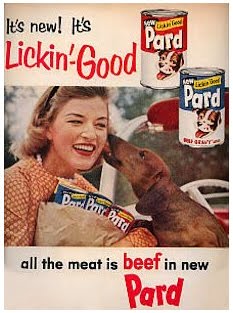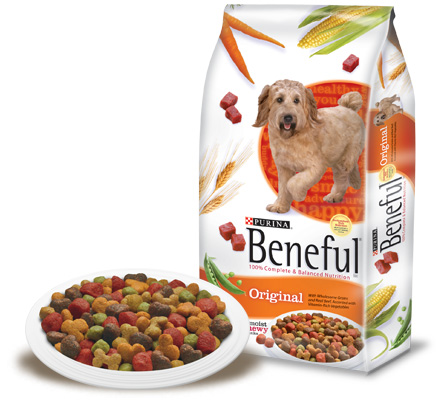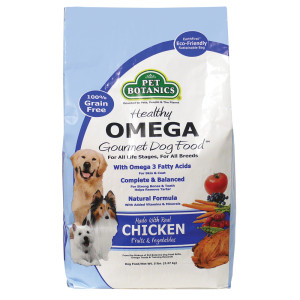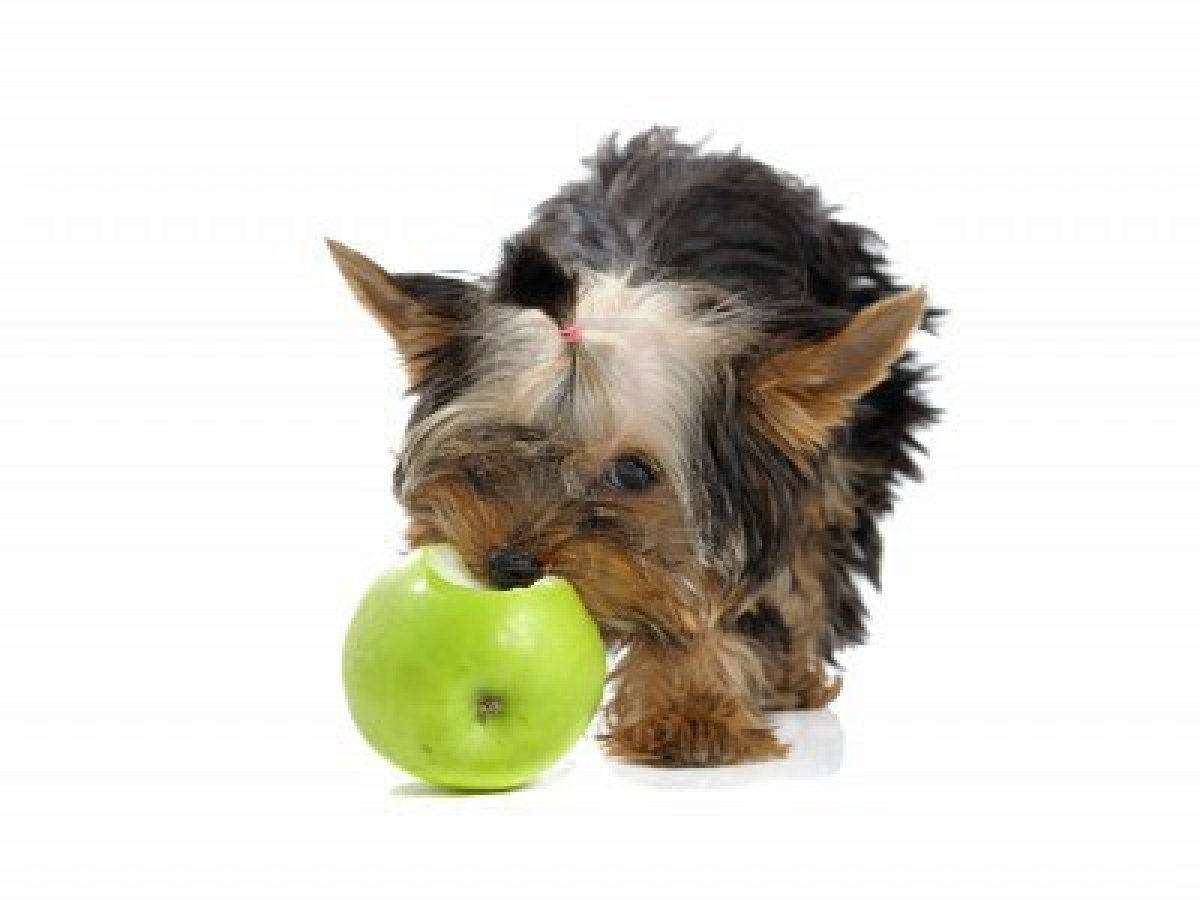Keeping Your Dog's Coat Beautiful: Food
In an earlier post about keeping your dog's coat beautiful, I said that brushing was the #1 most important thing you can do. This post will focus on the other thing that is tied for 1st place; feeding your dog a high quality food.

As many of my close friends can attest to, I bring up the topic of dog food pretty often... To be honest, I'm a little obsessed with what people feed their pets. This is because as a groomer I see first hand the health benefits that feeding your dog a high quality food can make.
High quality foods have sufficient nutrients, including essential fatty acids to maintain a healthy, shiny coat. On the other hand, a dog that has flaky skin and a dull, sparse coat may not be getting these essential nutrients that are part of a balanced diet.
Another contributor to skin and coat issues, as well as chronic ear infections, are food allergies. These can unfortunately often be attributed to the most common ingredients in dog food; beef, dairy, chicken, lamb, fish, eggs, corn, wheat and soy. In order to help your dog overcome allergies they should be eating a food that either has limited ingredients (to identify/avoid the allergen), novel ingredients (ie ingredients that are not included in the list of common ingredients dogs are allergic to) or is hypoallergenic. Low quality foods will not have any of these characteristics and thus are far more likely to aggravate allergies.
Other signs that your dog may be on the wrong food are outlined in this Pet MD slide show. If your dog is having medical issues always ask your vet if a change in diet could help.
While most dog owners will acknowledge that putting their dog on a great food is important, sometimes that is easier said than done. Two generations ago dogs were fed table scraps and leftovers from human food. It wasn't until the 1950s that the pet food industry started down the path of becoming highly commercialized.

Today, we are so inundated with advertising that it is difficult for the average consumer to separate high quality foods from low quality foods with good marketing campaigns. We are made to feel that only the priciest foods provide adequate nutritional value for our pets - or conversely, that the priciest foods aren't worth it since the lower quality foods advertise the same benefits.
The packaging doesn't help to make food selection easier nor do the ingredients that are almost impossible to decipher.
For example, here is the packaging of a low quality dog food



Did you notice that the packaging of all three of these foods featured pictures of at least one happy dog, carrots and meat?
Along with many others, I found myself duped by dog food marketing when I first brought home Wallace. When picking the best food at the pet store I assumed that the mid-priced foods would offer the best value and be comparable in quality to one another. It wasn't until I found the site Dog Food Advisor that I realized this was not so.
I initially fed Wallace what I thought was a reasonably high quality, grain free, food. Once I looked it up on the site I realized it was a decent quality food but I could buy another much better food for the exact same price. This brings me to my next point. For many dog owners the cost of food is a major consideration when choosing a food. A little research can help to ensure your are getting the most nutritional bang for your buck.
Whenever the topic of dog food comes up I always recommend checking in with Dog Food Advisor. Dog Food Advisor provides reviews and ratings for over 3,300 varieties of wet, dry and raw dog foods. It's pretty interesting when you take the time and browse through some of their reviews. Their method of evaluating the food is straight forward and thourough; they go through every ingredient listed, define it, list its characteristics be them positive or negative, and give a final overall rating ranging from 1-star to 5-star. By and large, the lower ranked foods have more fillers and less nutritious grains and cuts of meat, whereas the higher ranked foods are for the most part free of grains and fillers, opting for more natural and easily digestible options.

As many of my close friends can attest to, I bring up the topic of dog food pretty often... To be honest, I'm a little obsessed with what people feed their pets. This is because as a groomer I see first hand the health benefits that feeding your dog a high quality food can make.
High quality foods have sufficient nutrients, including essential fatty acids to maintain a healthy, shiny coat. On the other hand, a dog that has flaky skin and a dull, sparse coat may not be getting these essential nutrients that are part of a balanced diet.
Another contributor to skin and coat issues, as well as chronic ear infections, are food allergies. These can unfortunately often be attributed to the most common ingredients in dog food; beef, dairy, chicken, lamb, fish, eggs, corn, wheat and soy. In order to help your dog overcome allergies they should be eating a food that either has limited ingredients (to identify/avoid the allergen), novel ingredients (ie ingredients that are not included in the list of common ingredients dogs are allergic to) or is hypoallergenic. Low quality foods will not have any of these characteristics and thus are far more likely to aggravate allergies.
Other signs that your dog may be on the wrong food are outlined in this Pet MD slide show. If your dog is having medical issues always ask your vet if a change in diet could help.
While most dog owners will acknowledge that putting their dog on a great food is important, sometimes that is easier said than done. Two generations ago dogs were fed table scraps and leftovers from human food. It wasn't until the 1950s that the pet food industry started down the path of becoming highly commercialized.

The packaging doesn't help to make food selection easier nor do the ingredients that are almost impossible to decipher.
For example, here is the packaging of a low quality dog food

This food could be classified as a mid-quality dry food

And now take a look at the packaging of this high quality food...

Along with many others, I found myself duped by dog food marketing when I first brought home Wallace. When picking the best food at the pet store I assumed that the mid-priced foods would offer the best value and be comparable in quality to one another. It wasn't until I found the site Dog Food Advisor that I realized this was not so.
I initially fed Wallace what I thought was a reasonably high quality, grain free, food. Once I looked it up on the site I realized it was a decent quality food but I could buy another much better food for the exact same price. This brings me to my next point. For many dog owners the cost of food is a major consideration when choosing a food. A little research can help to ensure your are getting the most nutritional bang for your buck.
Whenever the topic of dog food comes up I always recommend checking in with Dog Food Advisor. Dog Food Advisor provides reviews and ratings for over 3,300 varieties of wet, dry and raw dog foods. It's pretty interesting when you take the time and browse through some of their reviews. Their method of evaluating the food is straight forward and thourough; they go through every ingredient listed, define it, list its characteristics be them positive or negative, and give a final overall rating ranging from 1-star to 5-star. By and large, the lower ranked foods have more fillers and less nutritious grains and cuts of meat, whereas the higher ranked foods are for the most part free of grains and fillers, opting for more natural and easily digestible options.

There are countless other ways that a good dog food will help your dog's long term health. Research the food you are feeding your pet to make sure you are getting the best value for your money. A well fed dog is a happy (and pretty) dog!
-Peter
- Why A Quality Pet Food Matters
By Linda Cole The good people at CANIDAE produce premium quality pet food that helps keep our dogs, cats and horses healthy. They've gone through extensive research to offer pet owners reliable, natural and nutritious food choices. But this article...
- Feeding Your Dog – Why Go Holistic
Just as we should be concerned about the food we eat, we should also be concerned about what we feed our dogs. But what really is a healthy dog food? According to dog experts, a healthy dog’s diet must contain 50% veggies, 40% meat and 10% whole grains....
- Dog Food Reviews And Comparisons
The food prepared for dogs can be classified as dry and canned food. Canned and dry dog food contains 70% and 10% water respectively. There are many companies in the market that sell dog food. The following articles deals with the reviews and comparisons...
- Best Dog Food For Pitbulls
Each dog breed has its unique set of nutritional requirements, based on its body size and energy requirements. Developed initially for blood sports like bull-baiting and dog-fighting, pitbulls are highly energetic dogs, friendly, and love being attended...
- Best Dog Food On The Market
There are many types of dog foods available in the market and each serves a different purpose. These include holistic, natural, organic, and canned dog foods among others. While choosing the best brand for dogs, you should take into consideration...
